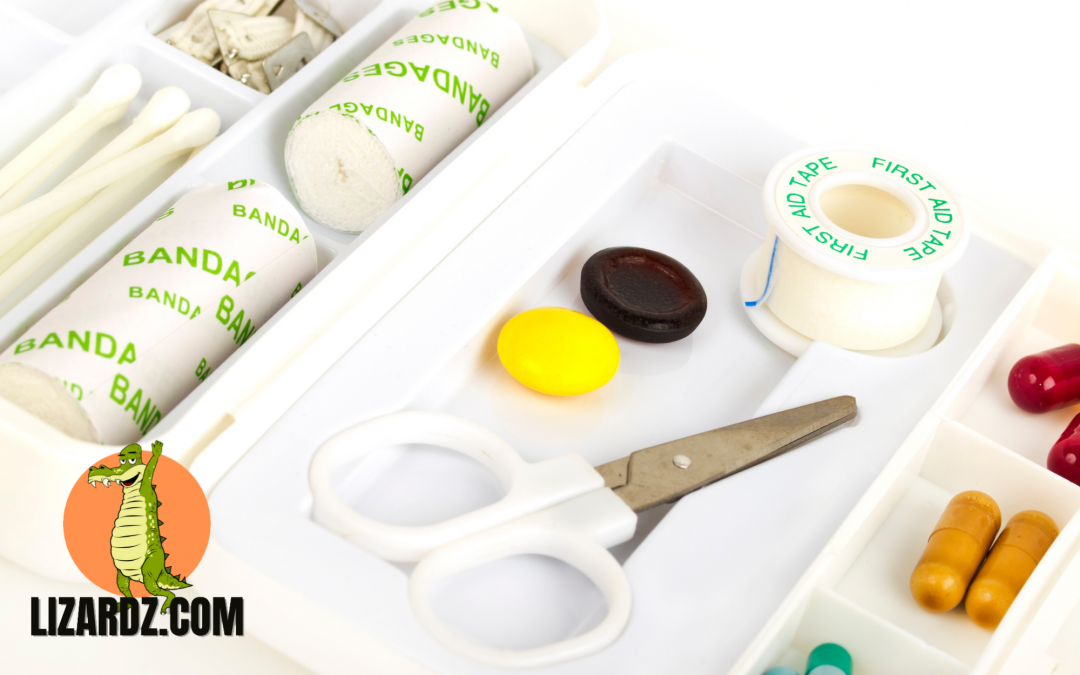A while back, the world watched as the people of New Orleans desperately tried to survive the aftermath of Hurricane Katrina, the catalyst for the breaking of the city’s levees.
Many of those in New Orleans, like those in other hurricane-prone areas, refused to leave their homes because doing so would force them to leave their beloved pets behind.
While humans are certainly no match for the force of Mother Nature, there are steps we can all take to ensure our pet’s safety should we be faced with a natural or manmade disaster.
In some cases, as with hurricanes, we generally have warnings of the impending storm, which can allow us precious time to evacuate or to ensure our preparations are complete.
In some instances, however, there is little warning. Still, the key to surviving a disaster is to plan ahead. You may never have to put your plan into action, but at least you have one…just in case.
Following are several tips that will help you prepare for an emergency:
Tip One: When you leave, always take your pets with you
If you’re evacuating, take your pets with you. Many motels and hotels in the United States are or are becoming pet-friendly. Leaving a pet – no matter how small or how big – to fend for herself in an emergency is cruel and may very well lead to your pet’s death. Plan now for how you are going to ensure your pet is safe in an emergency.

Make sure your pet has tags
Tip Two: Make sure your pet’s identification tags are up-to-date
If your pet wears an identification tag, make sure the tag is always up-to-date with your name, address, and phone number. Consider also putting your cell phone number on the tag in case you evacuate from your area.
Tip Three: If possible, microchip your pet
If your pet has a microchip, she will be much easier to find should you become separated from her. Essentially, when your pet is found, her body will be scanned by a veterinarian, animal shelter worker, or another professional. The scanner will produce a number.
The professional will then take that number and call the company that made the microchip. The company will tell the professional who the pet belongs to, and the professional can then contact you, the owner.
Microchips can be placed in dogs, cats, rabbits, and a whole host of other animals. If you’re unsure whether your pet is eligible for microchipping, talk with your veterinarian.
Tip Four: Have an extra copy of your pet’s medical records
Always have an extra copy of your pet’s updated medical records, including vaccination records. If your pet is taking medication, have a list of what medication she is taking and how often it is to be given to her.
Tip Five: Ensure you have at least three weeks’ worth of food for your pet(s)
While you’re stocking up on food for you and your family, take the time to stock up on your pet’s food. Make sure the food, if it’s canned, doesn’t go past the expiration date. If it does, stock up on new food.
For small animals, such as rabbits and guinea pigs, make sure there’s an abundance of food and hay. If the hay becomes dusty, throw it out and purchase new hay. Just make sure you have at least three weeks’ supply in case of an emergency.
Tip Six: Store plenty of bottled water
Store plenty of bottled water for both your family and your pet. Make sure you have enough to last you at least three weeks. Water after a natural disaster could become contaminated, and you don’t want you or your pet to get sick as a result of drinking contaminated water.
Tip Seven: Have a list of pet-friendly accommodations ahead of time
Fortunately, many hotels, motels, bed and breakfasts, and other types of lodging are becoming more and more pet-friendly. Create a list of pet-friendly accommodations in your neighboring towns and states by calling motels, hotels, and other forms of lodging to confirm their pet policies.
Don’t forget to ask if they make exceptions by allowing pets in the case of an emergency. Be sure to keep the list updated. In the event of an oncoming hurricane or another natural disaster, you can then quickly make reservations.
Also consider asking friends and loved ones who live outside of the emergency area if they would be willing take care of your pet or pets in the case of an emergency. In an ideal world, even if you have several pets, you and your pets will be able to stay together in an emergency.
In reality, you may have to compromise by having individual pets stay with different loved ones.
As a last resort, talk to your veterinarian or local boarding facilities to determine if they will board your pet(s) in an emergency. Keep an updated list of all facilities, including their regular and emergency phone numbers, so you can call them to arrange care for your pets if you’re unable to take your pet with you when you evacuate.

Photo by on Pexels
Tip Eight: Always keep up-to-date photos of each of your pets
Most pet owners have plenty of photos of their pets. Make sure you have at least one photo of each of your pets with you in the event of an emergency. Should you become separated from your pet, the photo will become invaluable in two ways.
First, you can use the photo to find your pet. Second, when you do find your pet, the photo will help verify that she does, indeed, belong to you.
Additionally, consider keeping your pet(s) photo in some type of waterproof bag or container.
Tip Nine: Don’t forget litter and litter boxes for your cat, rabbit, and other pets
If you have a pet who uses a litter box, like a cat or a rabbit, ensure you have a litter box and extra litter. If you have a bird, take an adequate supply of paper or newspaper to line the bottom of her bird cage. Travel cages and carriers that can be used in emergencies and when room in a car or accommodation is tight are available at many stores.
Tip Ten: Buy a sturdy carrier
An emergency is a stressful time for anyone, but it can be doubly stressful for pets, who don’t fully understand what’s happening. A sturdy pet carrier is a safe place to keep your pet during an emergency, ensuring that she doesn’t run off when she becomes frightened. A carrier also comes in handy as a bed if you head to pet-friendly accommodations.
Keep in mind that carriers aren’t just for dogs and cats. There are carriers, some of which are specifically made for smaller animals, for pets such as rabbits, ferrets, guinea pigs, gerbils, hamsters, and birds.
No matter how small your pet, make sure you have some type of carrier to ensure she is easy to transport in an emergency.
Attach to the carrier, just in case you are separated from your pet, your pet’s name and your contact information. Also include information about your pet’s diet, how much and how many times she eats each day, and any medications she may be taking, including the dosage and how often she is to take the medication.
Tip Eleven: Create a pet emergency kit
A pet emergency kit should contain much of what we’ve discussed so far, including medical records, vaccination records, and an up-to-date photo of your pet(s).
Your pet emergency kit should also include:
1 A first aid kit
2 Your pet’s medications
3 Your pet’s medical records
4 A pet bed, if applicable, and if small enough to be transported
5 A three-week supply of your pet’s food
6 Bottled water
7 A food and water bowl
8 A carrier
9 A leash, if you have a dog
10 Detailed instructions on when and how much your pet eats, what medications she takes, the dosage, and how often she takes them
11 Your veterinarian’s name and contact information
12 Some of your pet’s toys
Finally, keep your pet emergency kit in an easy-to-remember, easy-to-access place, so you can just grab it when you need it.
Tip Twelve: Have a backup plan
Even the most well-laid plans can fall apart, so you must have a backup plan. The American Red Cross suggests that pet owners enlist the help of a trusted friend or neighbor.
Should an emergency warning go out to the public while you are away from home – at work or out for the day – enlist a trusted friend, neighbor or loved one, to gather your pet(s), including their emergency kit, and to meet you at a predetermined meeting place.
Make sure the person you choose to get your pet is familiar with your pet and vice versa. In addition, the person should know exactly where you keep your pet emergency kit and where the pet can usually be found (sleeping under a bed, for example).
Ensure that you have your backup plan in place now, rather than waiting until disaster strikes.
Begin preparing for an emergency now. By doing the legwork now, you’ll better be able to deal with an emergency if one should occur.



